What’s New – March 2025
UX improvements
More Intuitive & Transparent Digital Product Passport (DPP)
The Digital Product Passport (DPP) is a key tool within the European Ecodesign for Sustainable Products Regulation (ESPR) framework.
It provides structured environmental impact data for each published evaluation and product, ensuring greater transparency and traceability.
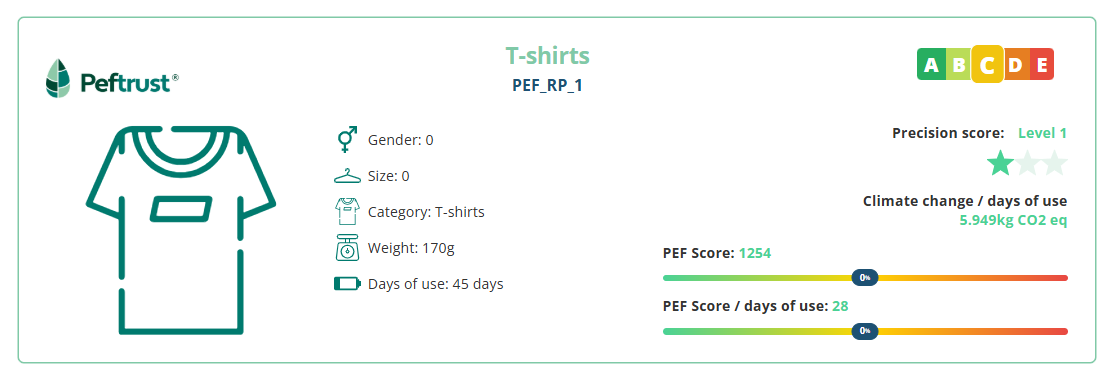
Where to find it?
It is available for each published evaluation and product in PDF and web format directly on the platform.
What’s improved?
- Larger brand logos for better product identification.
- Refreshed layout for product descriptions and environmental scores.
- Unified scoring approach – all environmental scores now follow PEF methodology for consistency.
- Clearer, more readable pie charts for impact visualization.
- Explicit methodology details included, specifying: database used, impact calculation method & environmental cost methodology
➨ Why this matters? These improvements make it easier to interpret, compare, and communicate impact data while ensuring alignment with ESPR requirements.
Smarter Team Management – ‘Departments’ are now ‘Teams’
Internal collaboration and access management have been optimized, allowing teams to work more efficiently while keeping data access secure.
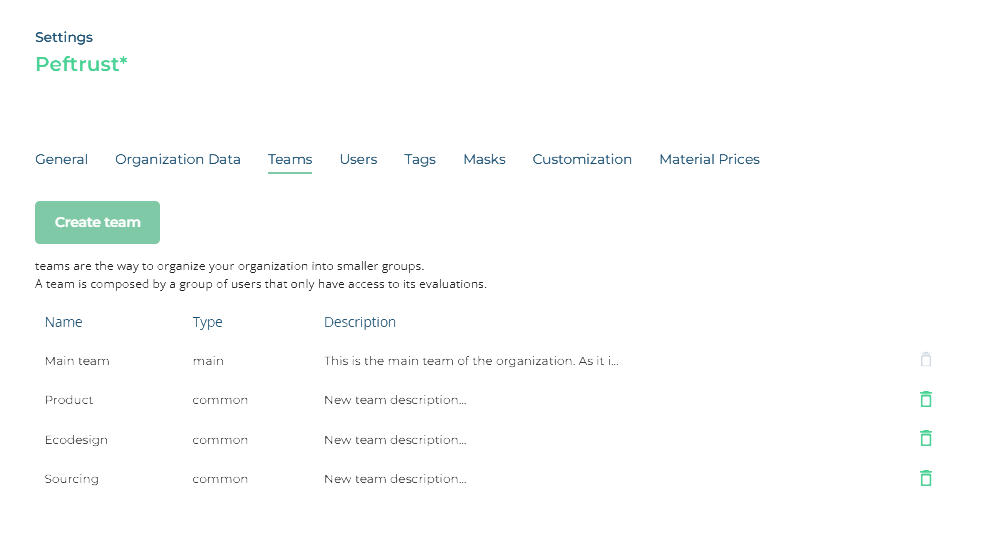
What’s new?
- Flexible team structuring – Create dedicated teams for Sourcing, Product Development, Buying, Eco-design, and more.
- Granular access control – Teams can only manage their assigned evaluations and products, ensuring focused workflows.
- Task assignments & messaging – Communicate directly within the platform through the Request Center to streamline collaboration.
What’s changed?
- Departments’ are now ‘Teams’, aligning terminology across the platform.
- Better visibility for Organization Owners – Use filters to track evaluations by team across:
- Evaluations & Libraries
- Portfolio dashboard
- Comparison library
- Benchmark collections
➨ Why this matters? These updates make it easier to structure internal teams, assign work efficiently, and track progress effortlessly.
Expanded Excel Export for Product Capabilities
Managing compliance and sustainability reporting requires structured and traceable data.
The export function now includes additional key data fields, simplifying French AGEC Law compliance and improving reporting workflows.
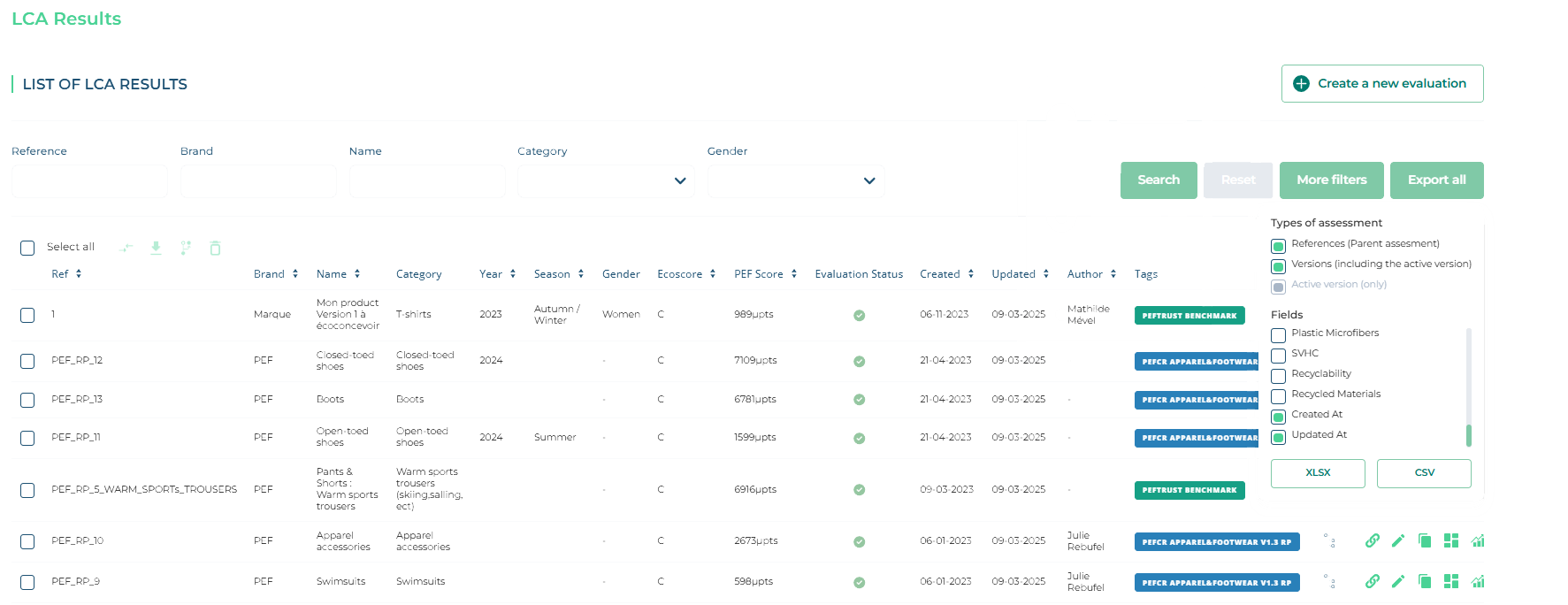
Where to export?
- Available from evaluation libraries and product libraries, enabling bulk exports of assessment data.
Available formats?
- Excel (XLSX) and CSV, making data processing easier for reporting and internal analysis.
What’s new?
- Additional export fields for compliance and traceability, including:
- % of recycled material
- Product recyclability
- SVHC substances (Substances of Very High Concern)
- Manufacturing locations: Apparel: Fabric production, Dyeing/Finishing, Assembly, Footwear: Stitching, Assembly, Finishing
➨ Why this matters? These updates streamline regulatory reporting, improve supply chain transparency, and help teams track compliance more efficiently.
Organization Data fields Now Available Directly in the Product Form
A new feature in the platform provides more flexibility for LCA calculations by making organization-level data accessible directly in product forms.
Why Organization Data Matters for LCA?
To perform accurate environmental assessments, certain data must be considered at the organization level, including:
- Distribution details
- Durability-related parameters
- Transport scenarios
This information is configured in “Settings > Organization Data“, alongside other company details.
➨ Previously, these organization-wide settings were applied globally using predefined masks that could be assigned by year, season, gender, or product category.
This allowed large-scale application to multiple products
What’s New?
A new “Organization Data” lifecycle section is now integrated into product forms, offering more flexibility!
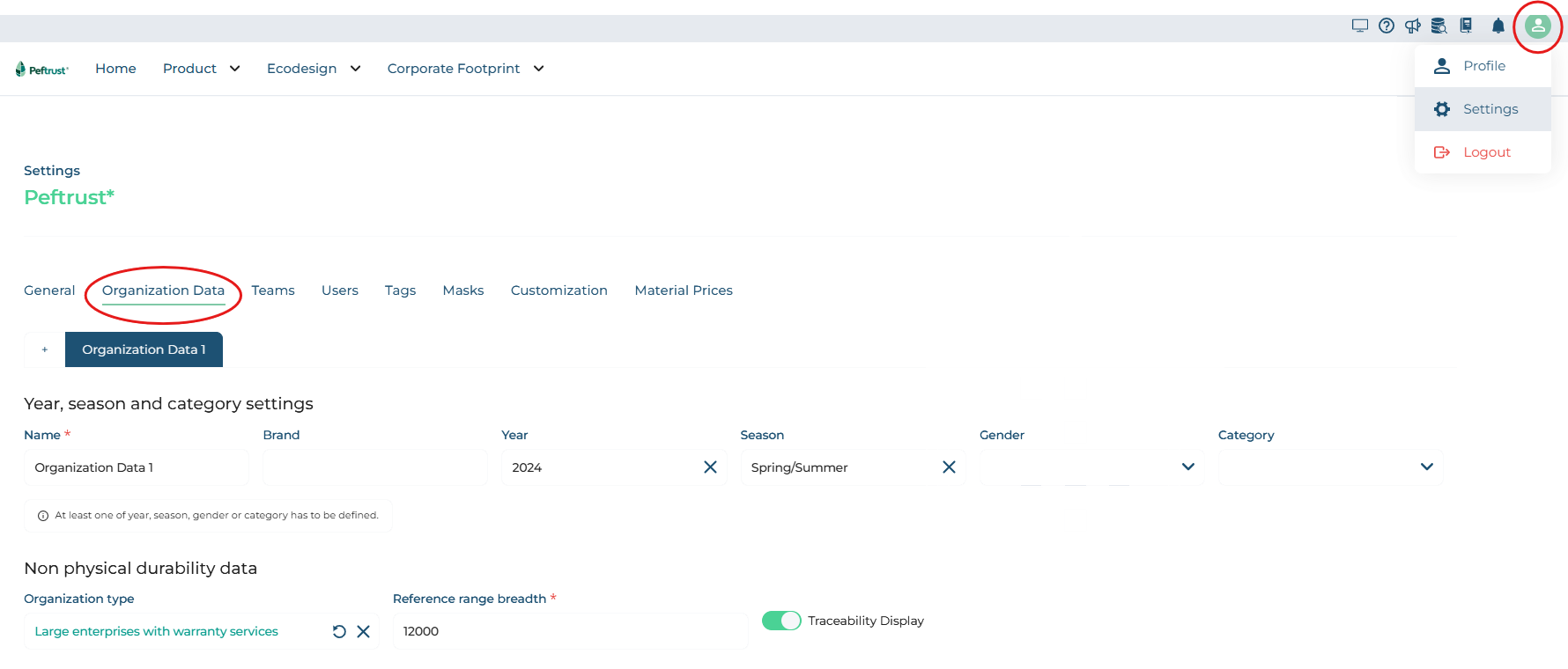
What’s Changing?
- Easier visibility & control
- The selected organization data mask is now visible directly in the product form.
- It’s easy to see which mask applies to a product at a glance.
- Product-Specific Adjustments
- It’s now possible to override the default mask for individual products, allowing for exceptions.
- Users can modify, add, or adjust organization data fields directly within a product form.
- Inject Organization Data Per Product (Without Masks)
Instead of applying a predefined mask, organization data is now input directly into each product for distribution information, durability calculations, transport scenarios
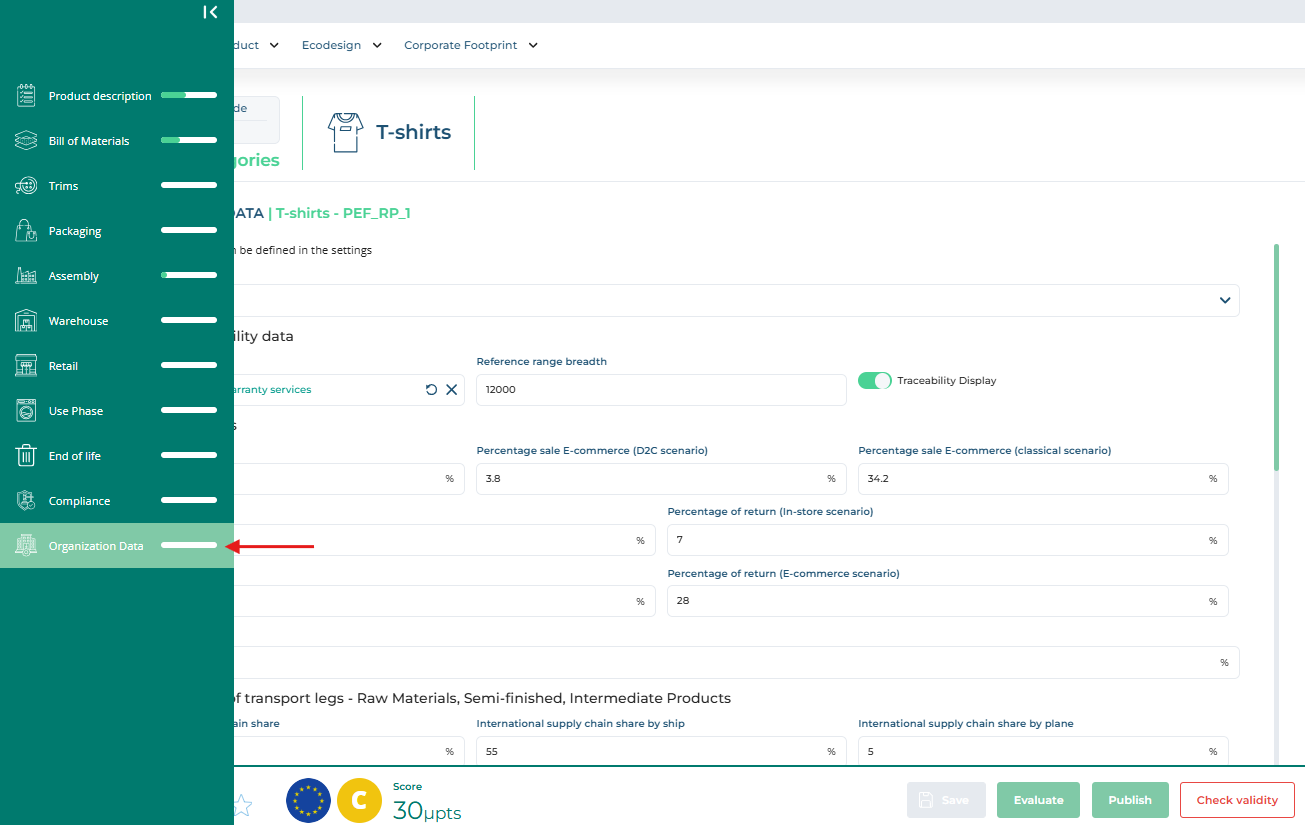
Next Steps?
➨ This update ensures greater flexibility for LCA calculations while keeping organization-wide consistency where needed.

